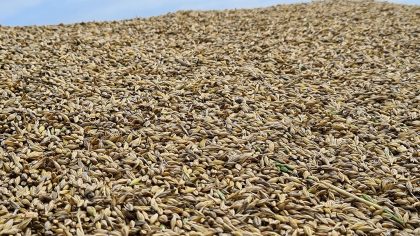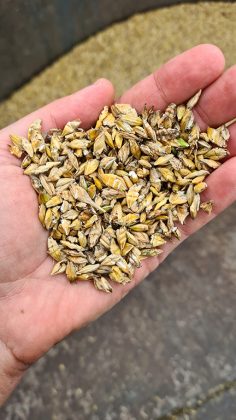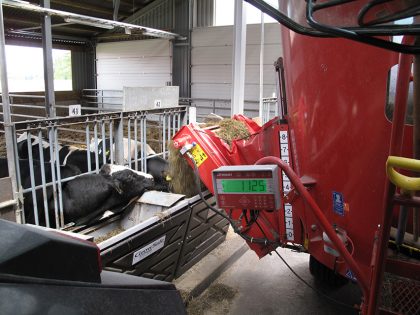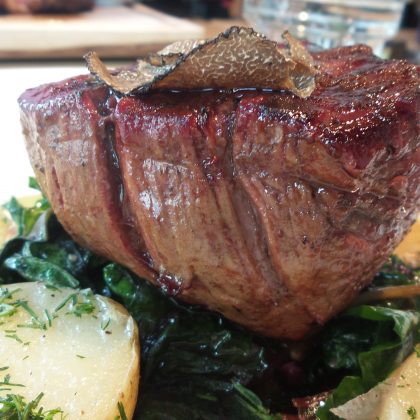Alternatives to grain drying work as feeds for beef cattle
The paper ‘Effects of different barley grain preservation techniques on intake, growth and carcase traits of finishing dairy bulls fed grass silage-based rations, published in the Journal of Agricultural Science, has been chosen as the latest Editorial Highlight.
In North-Western Europe, weather conditions during grain harvesting are moist and cereal grains need to be preserved to prevent spoilage. Typically, the grains have been dried, but that requires costly equipment and a lot of energy. Further, flexibility of the grain storage methods is increasingly important due to unpredictable weather conditions caused by climate change.
There are several alternative techniques for grain storage, where lactic acid fermentation or various antimicrobial chemicals are utilized. These methods also add to the flexibility of grain harvesting in terms of stage of ripening, i.e. grain can be harvested earlier than for drying. In our experiment, we compared the following methods in preserving spring barley (Hordeum vulgare) grains:
- Traditionally dried grain (moisture concentration 130 g/kg)
- High moisture crimped grain treated with a formic acid-based additive (moisture concentration 290 g/kg)
- Low moisture crimped grain treated with a urea-based additive (moisture concentration 200 g/kg)
- Low moisture crimped grain treated with a propionic acid-based additive (moisture concentration 180 g/kg)
Crimping refers to a slight crushing of the grains using a particular crimper mill. All grains were well preserved, and they were fed to beef cattle in a 6 month long feeding trial. The total mixed ration of the bulls comprised grass silage (500 g/kg on dry matter basis) and one of the barleys as the sole concentrate supplemented only with minerals. Feed was freely available to the animals. At the end of the experiment, the bulls were slaughtered at an average carcass weight of 317 kg.
All moist cereal grains resulted in significantly greater feed intake and faster growth rate of the bulls than dry grain feeding. The magnitude of the response was 6 % both for feed intake and growth rate, but carcass quality was not affected. No differences were observed between the different moist grains.
This study demonstrates that alternatives to grain drying can successfully be used, but great care must be taken to properly conduct the preservation to prevent losses in feed quality.
The Journal of Agricultural Science Editorial Highlights are selected by the Editor-in-Chief and are freely available for one month. View the recent selections here.









